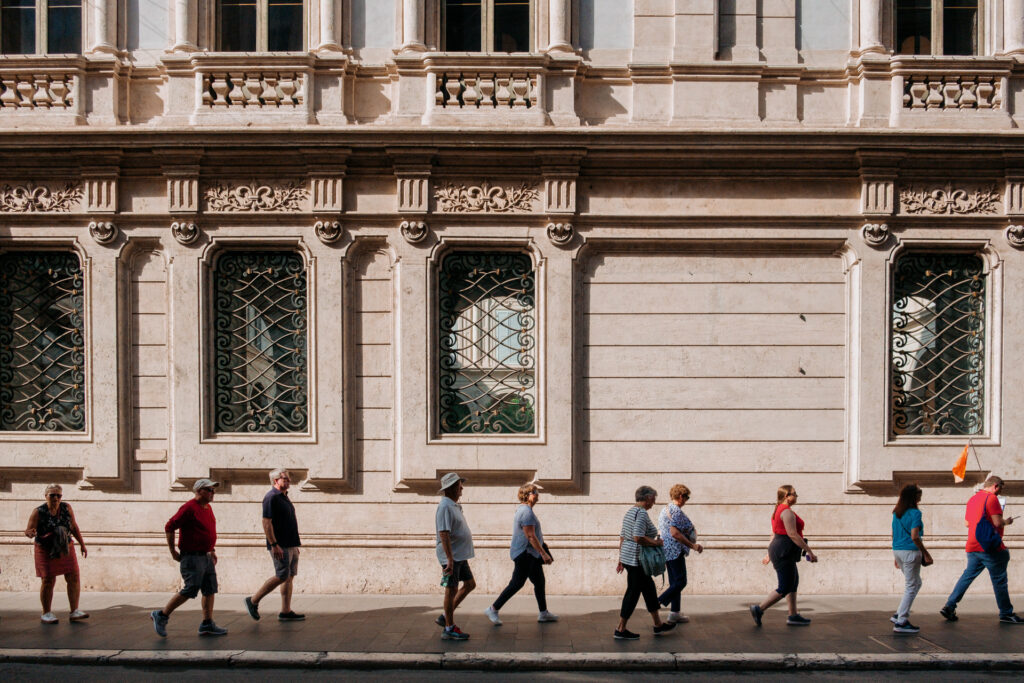Exploring Rome with AI: A New Era of Tourism
On a beautiful Monday morning in late September, tourists meandered leisurely through the Piazza della Rotonda. This bustling square is home to the Pantheon, a nearly 2,000-year-old temple dedicated to all the Roman gods, and is one of the city’s most iconic attractions.
The Pantheon, with its grand rows of Corinthian columns, naturally attracts a lot of attention. Nearly every passerby paused to snap a photo or take a selfie, attempting to capture its architectural perfection in pixels.
Among the crowd was Antonio Preiti, a resident of Rome, who was also using his smartphone in front of the Pantheon. He initiated a conversation with a straightforward question: "Is there a quiet, historic place nearby where we can have lunch?"
In response, a virtual guide named Julia, developed by the city of Rome and powered by Microsoft Azure OpenAI Service using GPT-4 technology, suggested the Piazza Mattei, also known as the Turtle Square. This location was just a 15-minute walk away and offered another glimpse into Rome’s rich history, with layers of stories that span thousands of years. Preiti and his two companions set off, guided by Julia’s directions.
Julia, the AI virtual assistant, is the result of a collaboration between Preiti and the Roman government. They are gearing up to welcome up to 35 million additional visitors in 2025 for the Catholic Jubilee celebration. The name Julia was chosen because it is short, commonly recognized across multiple languages, and has a deep historical connection to Rome. Julia is a quintessentially Roman name; Julius Caesar’s daughter was named Giulia, Augustus’s daughter was named Giulia, and one of Rome’s oldest families bore the Latin name ‘gens Julia.’
In collaboration with Microsoft, NTT DATA, a global provider of business and technology services, and Intellera, a consulting firm within the Accenture Group, the city aims to revolutionize the way tourists explore Rome. By equipping travelers with a reliable guide, the city hopes to enrich their experiences beyond the typical tourist circuit while alleviating congestion around the most popular sites.
The Role of AI in Modern Tourism
As technology continues to evolve, artificial intelligence (AI) is playing a pivotal role in transforming the tourism industry. Virtual assistants like Julia are becoming increasingly popular tools for enhancing the travel experience. By providing tailored recommendations and real-time information, these AI-driven guides offer a more personalized and efficient way to explore cities.
Julia’s ability to suggest lesser-known attractions such as the Turtle Square is a testament to the potential of AI in promoting sustainable tourism. By directing visitors to less crowded areas, AI can help distribute foot traffic more evenly across a city, reducing the strain on major landmarks and offering travelers a more authentic experience.
How AI Enhances the Visitor Experience
The integration of AI in tourism not only benefits the city but also enhances the overall visitor experience. Here’s how:
- Personalized Itineraries: AI can analyze user preferences and recommend personalized itineraries, ensuring that each visitor’s experience is unique and tailored to their interests.
- Real-Time Updates: With access to current data, AI can provide real-time updates on weather conditions, opening hours, and crowd levels, helping tourists make informed decisions during their visit.
- Language Translation: Language barriers can often hinder the travel experience. AI-powered translation services can facilitate communication, making it easier for travelers to navigate foreign environments.
- Historical Insights: AI can offer detailed historical insights and stories about various landmarks, enriching the visitor’s understanding and appreciation of the sites they explore.
- Sustainability: By promoting less-visited attractions, AI can contribute to more sustainable tourism practices, reducing the environmental impact on heavily trafficked areas.
Julia: A Step Towards Smarter Tourism
Rome’s introduction of Julia marks a significant step towards smarter tourism. This innovative approach not only aims to enhance visitor satisfaction but also seeks to preserve the city’s rich cultural heritage by managing tourist flow more effectively.
The collaboration between Rome, Microsoft, NTT DATA, and Intellera showcases the power of partnerships in leveraging technology to address modern challenges. By harnessing the capabilities of AI, these organizations are setting a precedent for other cities worldwide to follow suit.
Reactions and Reviews
The launch of Julia has been met with positive feedback from both tourists and locals alike. Visitors appreciate the convenience and personalized touch that the virtual assistant brings to their travel experience. Many have expressed their excitement about discovering hidden gems and experiencing Rome beyond the usual tourist hotspots.
Locals, on the other hand, are hopeful that Julia will help alleviate congestion in popular areas, allowing them to enjoy their city without the overwhelming presence of tourists. The initiative has also sparked interest among other cities looking to implement similar solutions to enhance their tourism offerings.
In conclusion, the introduction of AI-driven virtual assistants like Julia represents a forward-thinking approach to tourism. By embracing technology, cities can offer more enriching experiences to visitors while preserving their cultural heritage for future generations. As we look towards the future, the role of AI in tourism is likely to expand, paving the way for smarter, more sustainable travel experiences worldwide.
For more Information, Refer to this article.



































